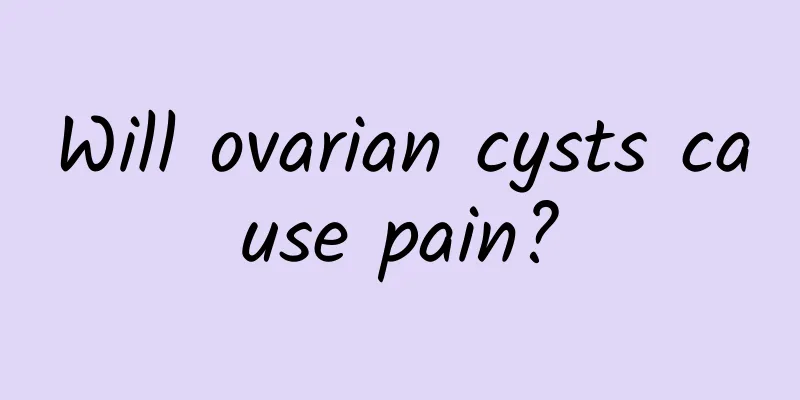Symptoms of cervical precancerous lesions in women

|
Female cervical precancerous lesions usually have no obvious symptoms in the early stages, but some patients may experience abnormal vaginal bleeding, increased secretions, and contact bleeding. Once discovered, they should seek medical attention as soon as possible for screening and treatment. Prevention and early detection are key, and regular gynecological examinations and HPV vaccinations can effectively reduce the risk. 1) Abnormal vaginal bleeding A common symptom of cervical precancerous lesions is abnormal vaginal bleeding. This bleeding manifests as irregular bleeding outside the menstrual cycle or bleeding after menopause. Some patients may experience contact bleeding after sexual intercourse, which usually indicates the possibility of cervical damage. If you encounter this situation, be sure to seek help from a professional gynecologist in time to clarify the cause through cervical cytology (such as TCT) and HPV testing. 2) Abnormal vaginal discharge Cervical precancerous lesions may cause changes in vaginal discharge, which may be manifested as increased vaginal discharge, blood in vaginal discharge, or odor. These symptoms may be caused by abnormal growth or inflammation of the cervical epithelium, but can be easily confused with other gynecological diseases. Through colposcopy and biopsy, doctors can accurately determine whether precancerous lesions exist. 3) Mild pelvic discomfort or pain Although uncommon, some women may experience mild discomfort or pain in the pelvic area. This is usually due to mild inflammation caused by abnormal changes in the tissues of the cervix. If symptoms persist or are accompanied by other abnormalities, it is important to seek medical help as soon as possible. Response and prevention measures ① Regular screening: The most important preventive measure is regular cervical cancer screening, including cervical cytology (TCT) and HPV testing. It is generally recommended to have an examination every 3 years or as recommended by a doctor for early detection and treatment. ② Get vaccinated with HPV vaccine: HPV vaccine can effectively prevent high-risk HPV infection and reduce the risk of cervical cancer and its precancerous lesions from the source. It is recommended for women aged 9-45 years old. ③ Pay attention to your own health management: avoid repeated cervical infections, pay attention to menstrual hygiene, avoid unnecessary cervical trauma (such as frequent artificial abortions or cervical operations), and quit smoking to reduce the risk of cervical lesions. If you have symptoms of cervical precancerous lesions, it is important to see a doctor and receive professional examinations as soon as possible. The cure rate of cervical cancer is higher in the early stages. Through regular screening and health management, cervical precancerous lesions are completely preventable and treatable. Take responsibility for your own health and take action today! |
<<: Postmenopausal vaginal bleeding symptoms
>>: Is it easy to get pregnant with uterine fibroids and ovarian cysts?
Recommend
Three women tell their true thoughts on what it feels like for a 60-year-old woman to resume married life.
When we talk about 60-year-old women, we often th...
What medicine is better for uterine fibroids? Treatment methods for uterine fibroids
Since uterine fibroids are related to estrogen, m...
What are the causes of dysmenorrhea in young girls?
Nowadays, many girls experience pain during menst...
Experts analyze the causes of cervicitis
The incidence of cervicitis is very high, and wom...
Treatment of pelvic effusion
Treatment of pelvic effusion 1. Physical therapy....
Abnormal vaginal discharge can be indirectly transmitted
Abnormal leucorrhea itself is not contagious, but...
The most important way to prevent vaginitis
Among gynecological diseases, vaginitis is a very...
Incorrect weight loss can easily lead to edema: drink high-fiber soy milk before meals
If you eat right, you can lose weight; however, i...
What tests should be done for chronic cervicitis?
Through the speculum, the diagnosis can be made b...
Do you know the complications of abortion?
Most people may have heard of abortion, and some ...
Can I still get pregnant after a miscarriage without a uterine curettage?
Can I still get pregnant after a miscarriage with...
Uncovering the true face of cervical erosion, the truth is this!
In the early years, married women who underwent p...
How to treat pelvic inflammatory disease so that it does not recur?
Many women find that pelvic inflammatory disease ...
I'm so afraid of lower body edema! Traditional Chinese Medicine: Red Bean and Coix Seed Soup Strengthens the Spleen and Eliminates Dampness
Winter is a good season for weight loss, but if y...
How to treat uterine fibroids? What are the precautions for uterine fibroids?
The treatment of uterine fibroids is often consid...









